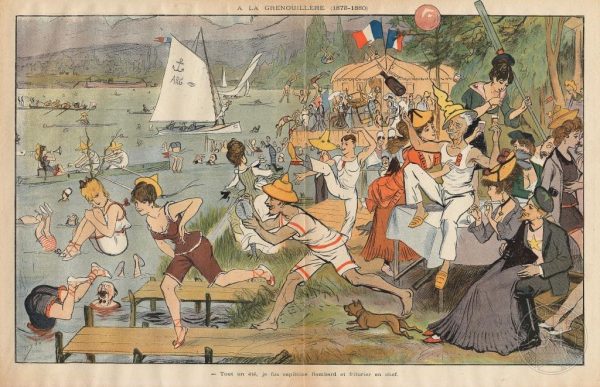History
Rivers have played an essential role in the development of leisure in Europe since the 19th century. Near Paris, London or Hamburg, areas designed for relaxation and celebration have become leisure destinations for city dwellers in search of nature.
Riverside Cities in Europe : A shared heritage
Rivers and waterways are therefore meeting places, where different generations and social classes come to stroll, bathe, row boats, sing or dance, resulting in a leisure society, where we can discover the joys of free time.
Since the 19th century, rivers have played a crucial role in several social activities, sports and cultural but also working class leisure activities. These activities such as swimming, canoeing, fishing and more recreational activities like listening to music, dancing and having fun have spread all along the rivers. It is a place where people from different age groups and backgrounds come together. With more and more spare time, these areas were visited a lot on Sundays and during the summer.
These activities are a European feature which was strengthened through transport development during the Industrial Revolution. Close to Paris, London or Berlin, some areas were devoted to leisure, recreation but also to festive events. They became vacation spots for townsfolks who wanted to escape from the city. Middle-classes were the first ones to go to the banks of urban rivers. This can be ascribed to their support for the social hygiene movement, their interest for Romanticism, their renewed relation with nature and the new trend for travel and sports. When working classes also got more spare time, they began to frequent the banks of urban rivers too. A new form of leisure was thus born.
This heritage, which must co-exist with the economic use of rivers, is what Riverside Cities network aims to develop and promote. In order to understand, protect and enhance this heritage, we think that it is essential to work together on the realisation of a network of European regions involving leisure and recreation along urban rivers. This network could candidate as a “Cultural Route of the Council of Europe” thereafter.


